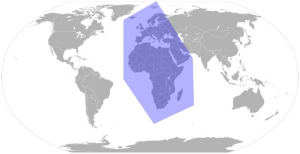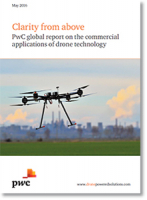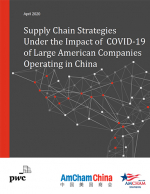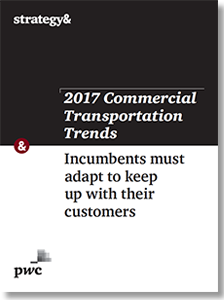2017 Commercial Transportation Trends
As the transportation and logistics industry morphs, traditional rivals will no longer be the sole or even the most threatening competition, incumbents must adapt to keep up with their customers.
If you lead a commercial transportation company, you’re heading toward one of two starkly different futures.
If you run Carrier A, you continue to travel down the path you’ve been on.
You provide shippers with cheap and reliable service using established product and performance definitions and metrics.
If you run Carrier B, you embrace innovation. Your business bears only passing resemblance to what it was before.
By adopting aspects of advanced vehicle-related IT systems, automated fleet management, cloud-based data analytics, robotics, location detection, and autonomous vehicle technologies, you have gained the flexibility and capabilities to shift gears and focus on the most profitable services based on your customers’ ever-changing needs.
The outcomes are all too obvious: Carrier A earns lower and lower margins, faces commoditization, and, quite possibly, is eventually rendered obsolete by more technologically adept competitors. Carrier B becomes a strategic partner to shippers with a growing market share while expanding the quality and breadth of its services.
It was possible before now to avoid making a choice, but no longer. 2016 was a breakout year for new technologies in the commercial transport industry, even while many companies still resisted them.
Although information systems have been disrupting carrier operations and logistics for years - compelling companies to develop sophisticated data networks that respond ever more quickly to customer shipment demands, track shipments more transparently, and offer faster and more definitive delivery schedules - only now are these technologies being implemented by a raft of new competitors with fresh business models.
Commercial transport companies have been hesitant about adopting more advanced technologies for a number of internal reasons - including the lack of a digital culture, privacy concerns, and cost - and widespread confusion about which hardware and software breakthroughs will have the biggest effect on profitability and overall organizational performance is a big handicap as well.
Here are a few of the more intriguing and potentially high-impact technologies available now or on the horizon to consider:
- Self-driving trucks
- Real-time logistics
- Robotics
- Predictive networks
Commercial transportation companies have a great opportunity at hand, but at this point many carriers feel that they are unable to avoid the fate of Carrier A.
Ultimately, adopting new technologies and innovative business models supported by new technologies offers a path through the thicket of transformation - and a way to grasp opportunity from disruption.
What’s Related




Favorites





